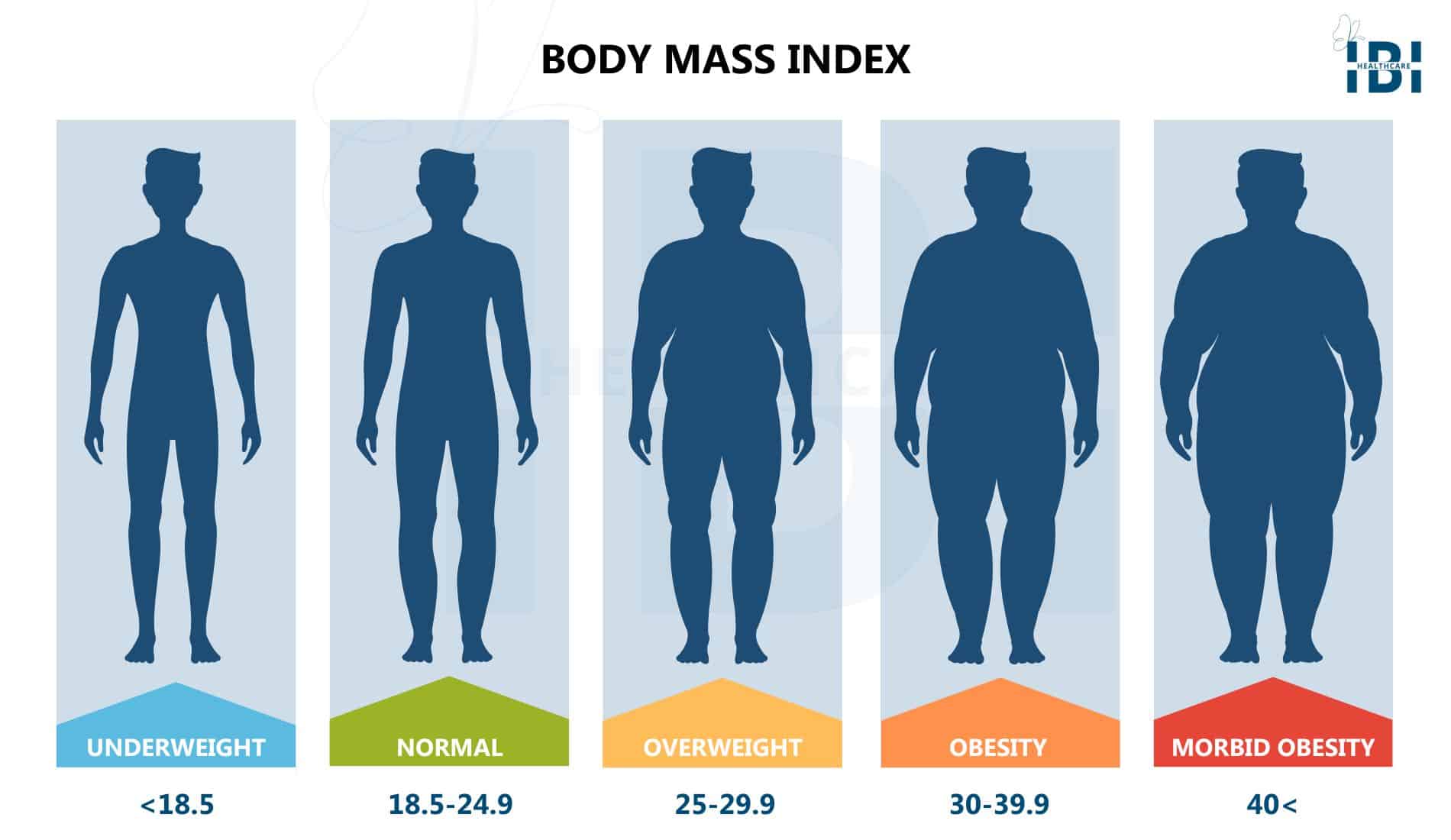Morbid obesity rates in the United States are experiencing a worrying growth, primarily driven by the alarming surge in obesity cases during the COVID-19 pandemic. Recent statistics reveal a significant 3% increase in obesity cases solely attributable to the pandemic in 2020. In February 2021, The Harris Poll conducted a survey that disclosed a staggering 61% of adults have admitted to experiencing weight gain since the onset of the pandemic. Furthermore, shockingly, 42% of these adults reported an average weight gain of 29 pounds. It is crucial to address and combat this concerning trend of morbid obesity immediately.
Gaining weight directly affects an individual’s BMI level. Specific factors determine a person’s BMI level, highlighting its immense importance. So, what exactly makes up a healthy BMI? Furthermore, when does BMI start indicating morbid obesity? This article aims to answer all these questions and provide a useful tool for you to calculate your own BMI.
What Is A BMI Level And Why Is It Important?
The term BMI, or body mass index, helps determine if an individual falls within a healthy weight range for their height, age, gender, etc. The introduction of the BMI calculation dates back to the late 1800s when Lambert Adolphe Jacques Quetelet, a Belgian mathematician, created it to aid the government in allocating resources. This calculation offered a quick and straightforward method to categorize individuals based on their degree of obesity.
In 1995, the NIH (National Institute of Health) adopted BMI as a tool to define obesity in the United States. Despite ongoing debates regarding its accuracy and relevance, BMI remains the global standard for discerning levels of obesity.
Significant importance lies in BMI levels as they serve as a benchmark in the healthcare industry, potentially influencing treatment plans and insurance coverage. Higher BMI levels, specifically 40+ or morbid obesity, contribute to an elevated risk of disease.
How Is A BMI Level Calculated?
BMI levels are determined by an equation that may vary depending on the system employed.
In the United States, individuals determine their BMI by dividing their body weight in pounds by the square of their height in inches and then multiplying that product by 703. This calculation is commonly used to assess an individual’s body composition and health status. The equation looks like this:
BMI = Weight (lb) / [height (in)]2 x 703 or the metric equation of
BMI = kg/m2 (kg is the person’s weight in kilograms and m2 is their height in meters squared)
The easiest way to find your BMI is to use our handy BMI calculator that does all the math for you!
What Does The BMI Chart Look Like?
The BMI chart effectively categorizes individuals into ranges, enabling easy identification of their category based on their calculated BMI number.
As you can see from the categories on the graphic, the morbid obesity BMI level begins at 40. When an individual falls into this range or higher, they are at greater risk for many health issues.

Does A BMI Calculation Determine Body Fat or Health?
No, BMI does not accurately measure body fat or determine a person’s “health,” including conditions like high blood pressure or diabetes.
Consider a football player who stands 6’2″ tall and weighs 247 pounds. According to the BMI chart used by the World Health Organization, he would be classified as higher weight with a BMI of 31.7.
Football players possess significant muscle mass and maintain minimal body fat. It is worth noting that NFL players, in particular, do not fall into the category of higher-weight or medically unwell individuals.
Moreover, it is important to emphasize another instance where the inaccuracy of BMI as a health indicator becomes evident. Individuals of Asian descent often encounter obesity-related illnesses and complications, including type 2 diabetes, even at lower BMI levels in comparison to their Caucasian counterparts.
Why Do We Use The BMI Chart?
The BMI chart continues to be utilized despite its inaccuracy in measuring body fat percentage or individual health. The primary reason for its persistence is the absence of any superior alternative. Furthermore, its simplicity and accessibility make it a preferred choice, as it solely requires a tape measure and scale. Additionally, it enjoys considerable usage and acceptance among healthcare professionals, researchers, and insurers on a global scale.
How Is BMI Used?
Bariatric surgery often relies on patient BMI as a screening method, while also serving as a quick snapshot of their potential risk for various conditions:
- Cancer.
- Infertility.
- Hypertension.
- Type II Diabetes.
- Premature Death.
- Gallbladder Issues.
- Severe Sleep Apnea.
- Joint degeneration.
- High Blood Pressure.
What Does It Mean When Someone Has A BMI Of Morbid Obesity?
A BMI of 40+ is classified as morbid obesity or class III obesity. This means that this individual has a higher risk of experiencing a serious illness (as listed above) or even dying earlier than they would if they were a healthy weight.
Is There A Cure For Morbid Obesity?
The best and only cure there is for morbid obesity and high BMI levels 35 and over, is to lose weight. Most individuals who have reached these higher BMI levels cannot lose weight without medical intervention.
Bariatric Surgery or Non-Surgical Weight-Loss Procedures can help patients lower their BMI levels and become healthier. Obtaining a healthy BMI level involves making lifelong choices to eat a healthy balanced diet and get a sufficient amount of exercise.
According to the CDC eating more calories than you use is the most common cause of obesity.
If your BMI exceeds the healthy range, we can assist you in correcting it at IBI Healthcare Institute. Moreover, we prioritize our patients’ health and are eager to support you on your journey. Additionally, our team of empathetic experts is ready to help you reach your weight loss goals.
Use our free online BMI Calculator to determine your Body Mass Index. Moreover, you can also reach out to us to arrange a consultation and discover the weight loss solutions available for maintaining a healthy BMI. We offer a wide range of treatment options and will identify or customize one that is ideal for you.










